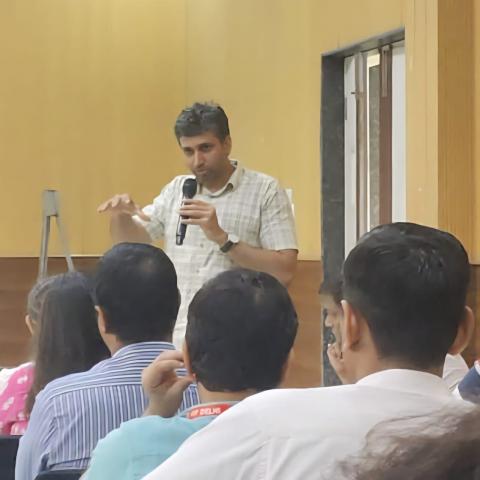
When Teachers Face the Classroom for the First Time
My teacher trainees are all set to face the classroom. For many of them, this will be the first time they stand on the other side of the table. I still remember my own first day in the classroom — my legs were trembling, and I was overly cautious not to write words on the blackboard where I might make a spelling mistake. Despite all my efforts, maintaining a straight line on the board was a challenge in itself. What made it worse was the presence of supervisors sitting at the back, seemingly waiting to note every mistake a trainee made. Of course, supervisors also record the good things, but the balance often remains disproportionate. I dug out my reflective diary and found the entry that I made on 22nd October, 2007.
"It was my first day in school, and I arrived a little late. My lesson plan Notebook was with my friend, so I went to his school to collect it, and about thirty minutes later, my friend brought it to me. My second period was with Class IX A, where I was supposed to teach History. To my surprise, the syllabus was completely different from what I had prepared in my lesson plan. I tried my best to address the class without it, but it turned into a major problem for me. Although my five-lesson plan had already been approved, none of them matched my new assignment. Madam advised me to prepare a fresh set of lesson plans. In Class X A, I faced serious issues with discipline—the boys were noisy, and despite my best efforts, I couldn’t manage to control them. However, my sixth-period class with Grade VI was memorable. The students were eager and welcoming; they even asked me to stay longer, and I happily spent an extra hour with them."
I often tell my students — the real journey of becoming a teacher begins the day you stand before a class. Just as a pilot’s experience is measured in flying hours, a teacher’s experience should be measured in teaching hours. The more time a teacher spends meaningfully inside the classroom, the greater the realization of how little one actually knows about teaching and learning.
The two words — Teaching and Learning — demand a deep understanding drawn from several disciplines: psychology, sociology, philosophy, neuroscience, history, economics, and politics, to name a few. Most of us begin with a vague notion that teaching means delivering content. That is relatively easy — one can master a set of content and deliver it. But that alone isn’t teaching. Machines today can do that far better than we can.
The next stage is to understand the learner — the human being at the heart of learning. And that’s where the intersection of all human disciplines begins. For instance, Piaget’s theory tells us that in the concrete operational stage, children begin to think logically about tangible events. They understand concepts like conservation and reversibility, and can mentally sort and classify objects. Yet, this understanding alone isn’t enough unless we also draw from sociology — to consider the child’s socialization, language development, and access to resources.
So when a teacher hears someone say, “There’s no visible impact of learning on children’s behaviour,” it’s easy to feel confused — unless they understand the philosophical debate between behaviourism and constructivism.
And then there are the everyday realities of schools. You plan a lesson carefully, only to find half the teachers are absent or pulled into “other duties,” and classes have to be merged. The frustration is real. But this moment, too, invites deeper reflection — on a teacher’s identity within the bureaucratic hierarchy.
Does the teacher have the agency to prioritize teaching, or must they simply follow orders from above? How does that shape the teaching–learning process?
To think like a teacher, one must think beyond the classroom — into the psychological, social, and political worlds that shape it. And perhaps, that’s when teaching truly begins — not with the first lesson plan, but with the first question we ask about what it means to teach.
- Log in to post comments
